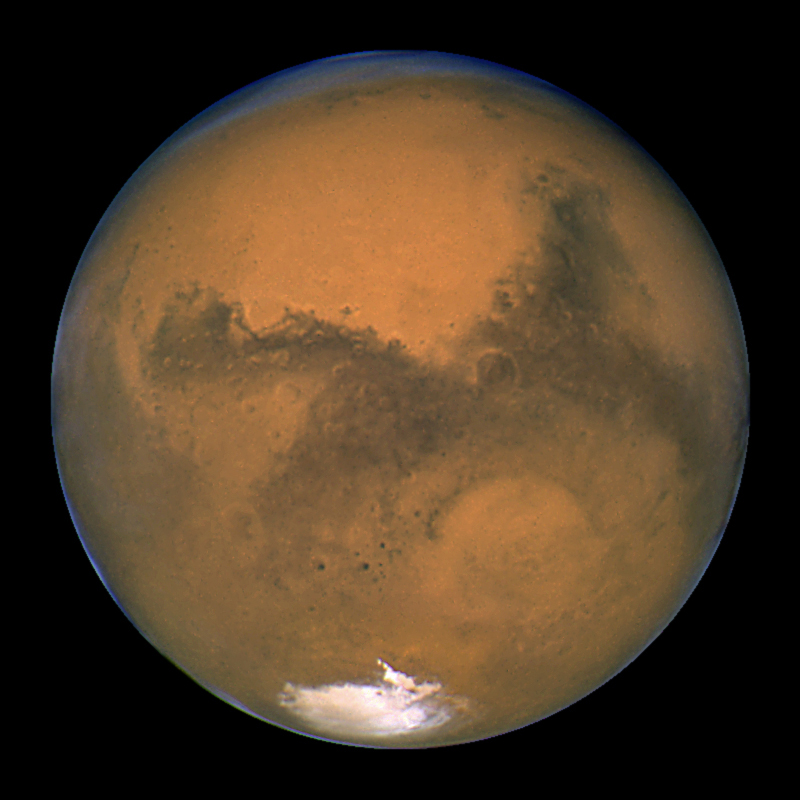Mars is named after the Roman god of war. Many believe that ancient peoples associated Mars with bloodshed and war because of its red color. The Romans were not the only society to associate the planet with bloodshed. The ancient Babylonians called it Nergal, after their god of fire, war, and destruction. In keeping with the planet’s association with the god Mars, its symbol is a circle with an arrow pointing outwards from its right corner. This is meant to represent Mar’s shield and spear.
That information is not nearly enough to satisfy anyone’s interest in the Red Planet, so here are a few interesting facts about Mars and its environs.
The largest mountain in the Solar System is on Mars. Olympus Mons is 27 km tall. It is a shield volcano that was able to erupt for million of years because Mars does not have tectonic plate movement. This allowed the same volcanic hotspot to erupt undisturbed until the giant mountain was formed.
The chemical symbol for iron is the same as the astronomical symbol for Mars. This is fitting, since the planet gets its reddish appearance from the iron oxide in the dust on its surface.
A year on Mars lasts 686.98 Earth days or 1.88 Earth years. There are four seasons throughout the year like here on Earth, but each season is longer than a typical Earth season.
Mars is full of water. Not liquid water like we see here on Earth, but water ice under the surface and at the bottom of craters. There is even evidence that there may be ice inside of caves on the Martian surface. These deposits are safe from the solar radiation that bombards the surface, so they are able to stay in place.
Mars does not have a magnetic field at this time, but spacecraft have detected residual magnetism in rocks on the surface. That would suggest an active magnetic field millions, if not billions, of years ago. Scientist believe that the core of Mars has become too solid to rotate and is no longer capable of generating a dynamo effect. A dynamo effect is essential in producing a magnetic field.
These are just a few of the interesting facts beyond who Mars is named after. Pay special attention to information generated by the Mars Express spacecraft. It has turned up a great deal of interesting data on, and under, the Martian surface.
In case you’re wondering, here’s how Jupiter got its name.
Here’s some historical information on Mars, the god of war, and more on Ares, the Greek version of Mars.
Finally, if you’d like to learn more about Mars in general, we have done several podcast episodes about the Red Planet at Astronomy Cast. Episode 52: Mars, and Episode 91: The Search for Water on Mars.
Sources:
NASA
Case Western Reserve University – Astronomy

